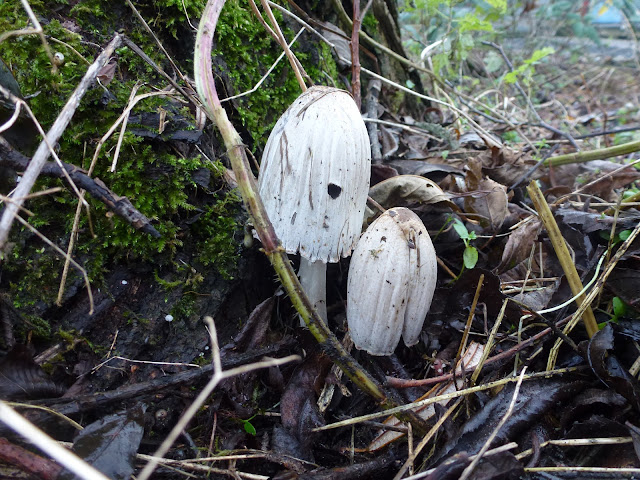The forecast sunshine didn’t appear, though at least it was dry for the group of five on this ‘Honeyguide social’ event. By the edge of Whitlingham Great Broad, the usual mallards and Egyptian geese fed by visitors were joined by many gulls, and we picked out one common gull among the many black-headed gulls.
We
took a clockwise circuit. Pausing by a near group of tufted ducks, with a great
crested grebe beyond, Tricia pointed to a pale duck by the far bank. It was female
goosander, and it moved into open water and showed well through the telescope,
including for passers-by.
Goosander and great white egret: both poor digiscoped images, though you can see what they are.
Ann went to the water’s edge to look at an overhanging willow and found the egg-laying scars of willow emerald damselfly.
A
scan of Whitlingham Little Broad revealed egrets perching on alders on the far
bank: two great white egrets and at least three little egrets. One or two great
white egrets have been here regularly of late, according to records on the
Norwich Bird News WhatsApp group. Like little egrets, they are increasingly a routine
sighting.Common inkcap.
Along the far side of the Great Broad, it was rich in fungi on dead wood and in leaf litter. Species we identified with confidence included jelly ear, coral spot, turkeytail, yellow brain, purple jellydisc and candlesnuff. Common bonnet and common inkcap were added later; thank you to James Emerson for his advice.
 |
| Top left:candlesnuff fungus. Top right: common bonnet, growing high on a poplar. Bottom left: yellow brain. Bottom right: purple jellydisc (centre), with silverleaf fungus (top and bottom right). |
We
heard from other walkers that the paths were flooded at the eastern end of the
circuit, so we retraced our steps back to the car park and Barn Café.
Chris Durdin





No comments:
Post a Comment